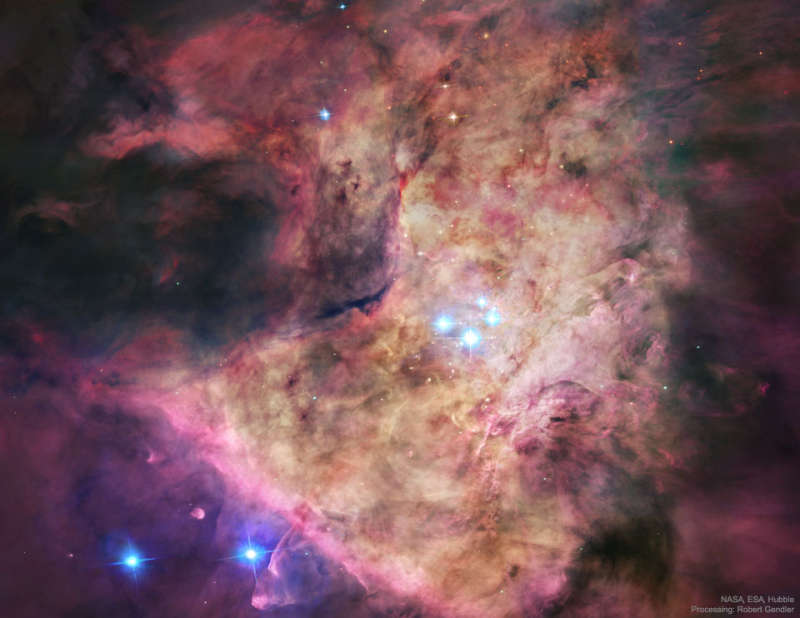Credit & Copyright: Data:
Hubble Legacy Archive,
Processing:
Robert Gendler
Explanation:
Near the center of this sharp cosmic portrait, at
the heart of the Orion Nebula,
are four hot, massive stars
known as
the Trapezium.
Gathered within a region about 1.5 light-years in radius,
they dominate the core of the dense Orion Nebula Star Cluster.
Ultraviolet ionizing radiation from the
Trapezium stars,
mostly from the brightest star
Theta-1
Orionis C
powers the complex star forming region's entire visible glow.
About three million years old, the Orion Nebula Cluster was
even more compact in its younger years and a
recent dynamical study indicates that
runaway stellar collisions
at an earlier age may have formed a black hole
with more than 100 times the mass of
the Sun.
The presence of a
black hole within the cluster
could explain the observed high velocities of the
Trapezium stars.
The Orion Nebula's distance of some 1,500
light-years would make it the
closest known black hole to planet Earth.
APOD Event:
APOD Editor to speak at Fermilab on August 8
1999 2000 2001 2002 2003 2004 2005 2006 2007 2008 2009 2010 2011 2012 2013 2014 2015 2016 2017 2018 2019 2020 2021 2022 2023 2024 2025 |
Yanvar' Fevral' Mart Aprel' Mai Iyun' Iyul' Avgust Sentyabr' Oktyabr' Noyabr' Dekabr' |
NASA Web Site Statements, Warnings, and Disclaimers
NASA Official: Jay Norris. Specific rights apply.
A service of: LHEA at NASA / GSFC
& Michigan Tech. U.
|
Publikacii s klyuchevymi slovami:
M 42 - Orion Nebula - black hole - Trapeciya Oriona - Tumannost' Oriona - chernye dyry
Publikacii so slovami: M 42 - Orion Nebula - black hole - Trapeciya Oriona - Tumannost' Oriona - chernye dyry | |
Sm. takzhe:
Vse publikacii na tu zhe temu >> | |
